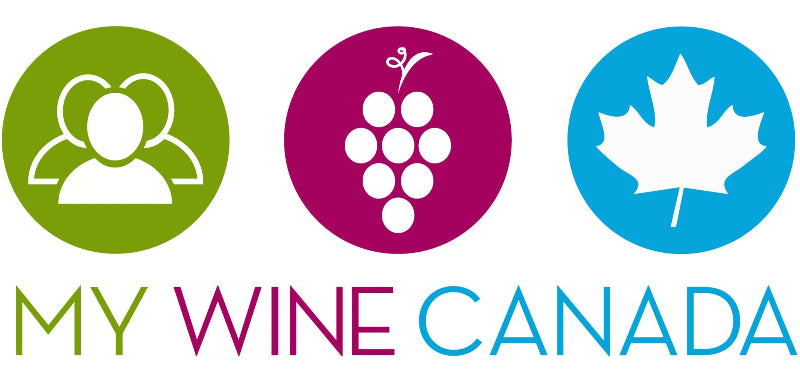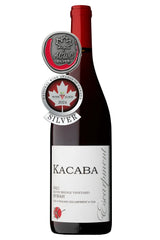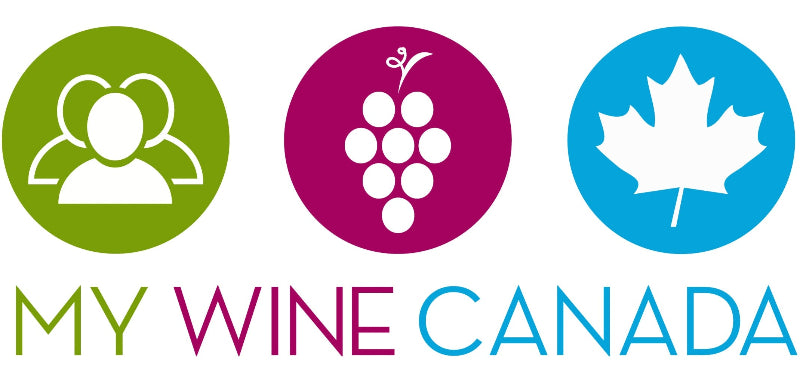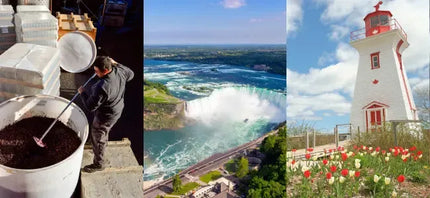My love for wine started at a bridal shower.
Our server was walking around offering glasses of red or white wine. I, not knowing much about wine, asked for the white. He poured the glass from a mystery bottle and walked away.
I took a sip, ready to pucker my face like I usually do whenever I drink an alcoholic beverage of any sort.
But the pucker never happened.
Then I took another sip… and paused. What was that? It was smooth. Fresh. Bursting with flavours that I couldn’t pick out (maybe there was a whisper of something herbal) – I didn’t know wine could taste like that.
I was enjoying the wine so much that I asked for another glass. But unfortunately for me, I never actually asked what that white wine was.
That mystery kickstarted my wine journey. I became a woman on a mission, trying every white wine I could find. Chardonnay? Pinot Grigio? Sauvignon Blanc?
Did I ever find the exact wine from the bridal shower? No.
But from that moment on, I was hooked. That experience opened the door to wine tastings, food pairings, and learning about the history and origins of my favourite wines.
The History of Sauvignon Blanc
Sauvignon blanc is a green-skinned grape variety that hails from the Bordeaux region of France, but it truly rose to fame in the Loire Valley, especially in Sancerre and Pouilly-Fumé. The name comes from the French word sauvage (meaning wild) and blanc (white), a nod to the grape’s wild-growing origins.
While it’s been grown in France for centuries, sauvignon blanc became an international darling when New Zealand entered the chat in the 1980s. The Kiwis brought their own twist, one that was more tropical, more zesty, and undeniably bold.
Today, sauvignon blanc is grown all over the world, from California to Chile, and of course, right here in Canada.
Sauvignon Blanc of the North
In Canada, sauvignon blanc has found a cool-climate home in a few key wine regions, particularly in British Columbia’s Okanagan Valley and Ontario’s Niagara Peninsula.
In the Okanagan, the long daylight hours and dramatic temperature swings between day and night help preserve the grape’s acidity while coaxing out those signature flavours like lime, green apple, gooseberry, and fresh herbs. Some winemakers here even experiment with partial oak aging to give the wine a richer texture.
In Niagara, the cooler climate brings out the grape’s grassy, mineral-driven side. Many local producers lean into a Loire-style approach: bone dry, crisp, and refreshingly elegant. On hot summer days, it’s made for patios and seafood platters with friends and family.
Wine, Food, and Friends
The first time I met Richard, we were kids – elbow-deep in a sandbox type of kids. One day he started singing, “man, I feel like a woman!” like he was Shania Twain, and from there, I thought he was hilarious.
But, as kids do, we move schools and forget about each other.
We didn’t cross paths again until the 7th grade. Although we were much older and became visible victims of puberty – I recognized him. And he recognized me. From there, we slowly became inseparable.
We talked about everything – from music to our love lives – creating inside jokes that annoyed everyone around us.
Throughout high school and most of college, we did everything together. That is, until life started to pile up.
Jobs. Deadlines. Partners. Stress. Even though we lived down the street from each other, we began to drift. A text here. Chatting when we see our big group of friends. But nothing like before.
Then one Saturday night, he called me.
After hours of talking, we felt our old selves show up again. We realized that we needed us.
That night, we made a promise: to show up more often.
That’s when the weekday dinners started. After work, he’d arrive at mine with groceries and I would have a bottle of wine to pair with our dinner. He cooks like an amateur (I’m a better cook and arguably better looking too), but he insists on doing more than me. Sometimes he’ll burn something, and I laugh at him with my wine in hand.
Through food and wine, we found our rhythm again.
The kitchen became our new sandbox. A safe place where we could chop, stir, sip, and share whatever was on our minds. Work stress. Our drama. Big dreams. Dumb memes.
I learned something important during those dinners. Friendships don’t always fade because of distance. Sometimes, it’s the silence that grows when we stop choosing to be present. But when you do choose, when you make space, open the wine, and sit down together, that’s where connection lives.
Sauvignon Blanc Scallop Pasta Recipe
This is a recipe by What’s Gaby Cooking – it was a big hit when Richard made it, and it’s now a highly requested dish from friends and family alike.
We made this recipe with a bottle of Leaning Post 2024 Sauvignon Blanc.
Lemon Garlic Scallop Pasta Recipe by Gaby Dalkin
Ingredients
- ¾ pound linguini
- 1 pound scallops
- Kosher salt and freshly ground black pepper
- 1 tablespoon olive oil plus some for drizzling
- 3 tablespoons butter divided
- 4 cloves garlic chopped
- 1 large shallot finely chopped
- ½ teaspoon crushed red pepper flakes
- 4 sprigs fresh thyme leaves removed and chopped
- 1 cup Leaning Post 2024 Sauvignon Blanc
- 1 cup seafood stock chicken stock will work too
- 1 cup fresh basil torn
- ½ cup chopped chives
- 1 lemon zested and juiced
Instructions
-
Cook the pasta al dente.
-
Remove the muscle from the scallops and pat dry with a paper towel. Season the scallops generously with salt and pepper.
-
Preheat a large skillet over medium high heat. Add and heat the olive oil. Sear the scallops for 2-3 minutes on each side until golden brown. The last minute, add 2 tablespoons of butter and baste the scallops, then remove from pan and tent loosely with foil to keep warm
-
Add an additional drizzle of olive oil to the skillet and add the garlic, shallots, crushed red pepper flakes, thyme, salt and pepper. Reduce heat to medium low and sauté garlic and shallots 1 to 2 minutes, stirring constantly.
-
Add wine to the pan and scrape up any pan drippings. Reduce the wine for 1 minute, then add seafood stock. Continue to cook for about 1 minute. Add the basil, chives, lemon zest and juice and the remaining 1 tablespoon of butter and stir the mixture until the butter has melted. Add the cooked pasta and cook for about 30 seconds, just to combine and let the pasta soak up the sauce. Nestle the scallops back into the skillet to serve.
Wine Pairing
You can pair the pasta with the same sauvignon blanc that you used to cook, or grab an extra bottle of our most popular wines:







